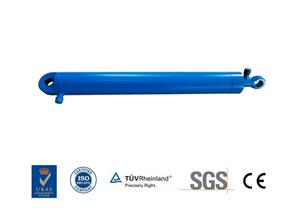Reasons for corrosion in stainless steel distribution boxes:
First, chemical corrosion
1. Surface contamination: oil, dust, acid, alkali, salt, etc. attached to the surface of the workpiece are converted into corrosive media under certain conditions, and chemically react with certain components in the stainless steel to cause chemical corrosion and rust.
2. Surface scratching: The damage of the passivation film caused by various scratches reduces the protection ability of the stainless steel, and easily reacts with the chemical medium to cause chemical corrosion and rust.
3. Cleaning: After washing and passivation, the cleaning is not clean, leaving residual liquid, directly corroding stainless steel parts.
Second, electrochemical corrosion
1. Carbon steel pollution: Scratches and corrosive media caused by contact with carbon steel parts form galvanic cells and cause electrochemical corrosion.
2. Cutting: The adhesion and corrosion of rust-prone substances such as cutting slag and splashing form a primary battery to generate electrochemical corrosion.
3. Baking school: The composition of the flame heating zone changes and the metallographic structure is uneven, and the primary battery is formed with the corrosive medium to cause electrochemical corrosion.
4. Welding: physical defects (biting, stomata, cracks, unfused, incomplete penetration, etc.) and chemical defects (grain coarse, grain boundary chrome, segregation, etc.) and corrosive medium forming the primary battery to generate electricity Chemical corrosion.
5.: Chemical defects in stainless steel (uneven composition, S, P impurities, etc.) and physical defects on the surface (loose, blisters, cracks, etc.) are conducive to electrochemical corrosion caused by the formation of galvanic cells with corrosive media.
6. Passivation: The acid passivation passivation effect is not good, resulting in uneven or thin passivation film on stainless steel surface, which is easy to form electrochemical corrosion.
7. Cleaning: The acid-washed passivation residue remaining and the chemically corroded product of stainless steel form electrochemical corrosion with the stainless steel piece.
In short, due to its special metallographic structure and surface passivation film, stainless steel is generally difficult to be corroded by chemical reaction with the medium under normal conditions, but it cannot be corroded under any conditions. In the presence of corrosive media and incentives (such as scratches, splashes, slag, etc.), stainless steel can also be corroded by slow chemical and electrochemical reactions with corrosive media, and the corrosion rate is relatively fast under certain conditions. Corrosion, especially pitting and crevice corrosion. The corrosion mechanism of stainless steel parts is mainly electrochemical corrosion.
Therefore, all effective measures should be taken during the processing of stainless steel distribution box products to avoid rust conditions and incentives. In fact, many rust conditions and incentives (such as scratches, splashes, slag, etc.) have a significant adverse effect on the appearance quality of the product, and should and must be overcome.




